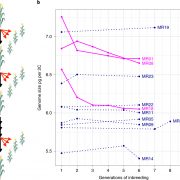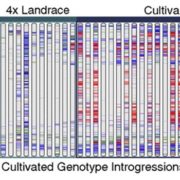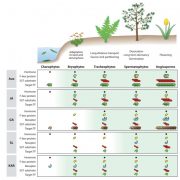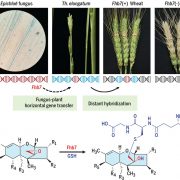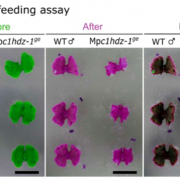Review – Getting to the Roots: A Developmental Genetic View of Root Anatomy and Function From Arabidopsis to Lycophytes (Frontiers in Plant Sci)
 Plant roots are essential organs for water and nutrient uptake, and aboveground biomass support. While these organs are important for many plant functions, the evolutionary history of the root is still unclear. The fossil record suggests that roots evolved in both the lycophyte (clubmosses and their allies) and the euphyllophyte (ferns and seed plants) lineages. Lycophyte and euphyllophyte roots share a number of similarities, such as indeterminate growth due to a root apical meristem, root hair production and the presence of a specialized endodermal layer around the vascular stele. These unique traits must have evolved independently in the lycophyte and euphyllophyte lineages. However, it is unclear how these apparently analogous tissues arose, as there are very few studies that elucidate the genetic and molecular regulation of lycophyte and fern roots. Thus, Augstein and Carlsbecker review key regulatory networks of root development in the angiosperm Arabidopsis and discuss the importance of comparative analyses of root anatomy and morphology of extant and extinct species. This review will aid researchers who are interested in elucidating root evolution through the increased understanding of gene regulation networks and gene function of lycophyte and euphyllophyte roots. (Summary by Julia Miller) Front. Plant Sci. 10.3389/fpls.2018.01410
Plant roots are essential organs for water and nutrient uptake, and aboveground biomass support. While these organs are important for many plant functions, the evolutionary history of the root is still unclear. The fossil record suggests that roots evolved in both the lycophyte (clubmosses and their allies) and the euphyllophyte (ferns and seed plants) lineages. Lycophyte and euphyllophyte roots share a number of similarities, such as indeterminate growth due to a root apical meristem, root hair production and the presence of a specialized endodermal layer around the vascular stele. These unique traits must have evolved independently in the lycophyte and euphyllophyte lineages. However, it is unclear how these apparently analogous tissues arose, as there are very few studies that elucidate the genetic and molecular regulation of lycophyte and fern roots. Thus, Augstein and Carlsbecker review key regulatory networks of root development in the angiosperm Arabidopsis and discuss the importance of comparative analyses of root anatomy and morphology of extant and extinct species. This review will aid researchers who are interested in elucidating root evolution through the increased understanding of gene regulation networks and gene function of lycophyte and euphyllophyte roots. (Summary by Julia Miller) Front. Plant Sci. 10.3389/fpls.2018.01410


